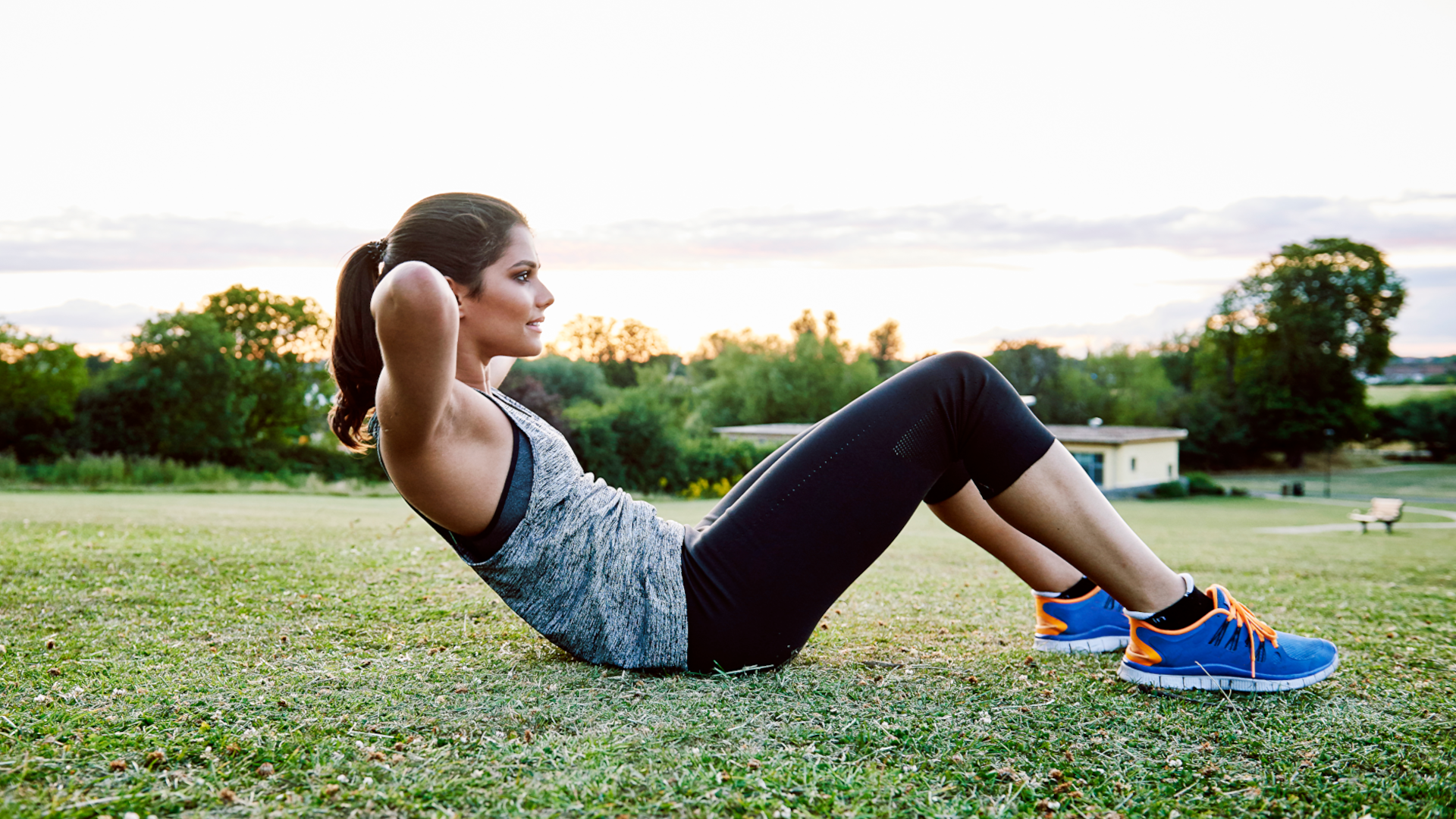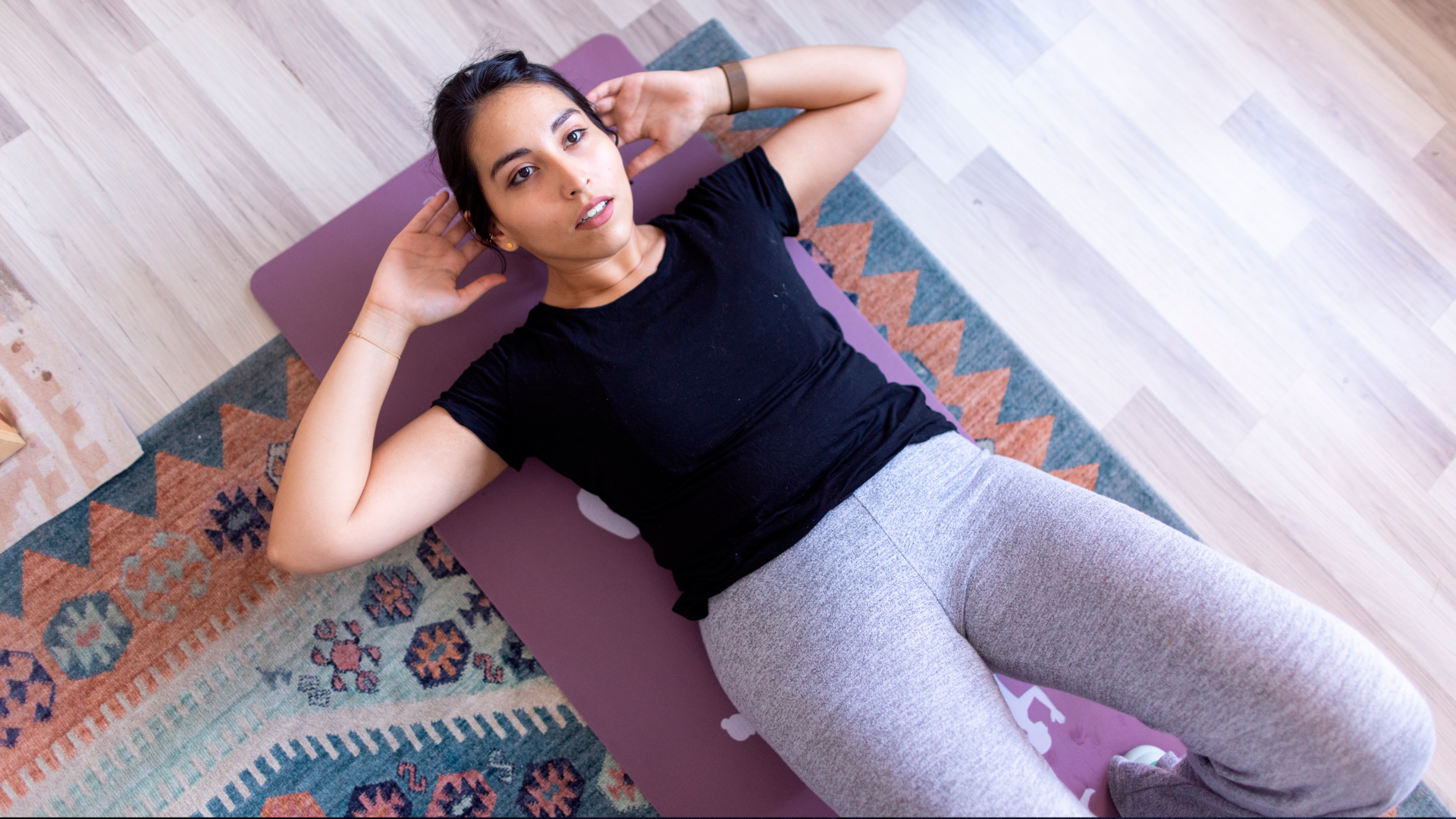I did 100 crunches a day for a week and the results were wild
It's a brilliant exercise for working those ‘six-pack muscles’


‘How to get a six-pack’ is a highly searched fitness-related question that crops up in Google all year round. In April alone it had over 300,000 searches, which isn’t surprising as people are usually keen to ramp up the workouts and get in shape for the summer months ahead.
My workout regime consists of a lot of heavy weightlifting and while many of the big compound movements, such as squats and deadlifts, do work your core, I was aware that I’d abandoned doing some isolation core exercises (the type of exercises that just target your core muscles). My deep core muscles are ‘ok’ because of the style of training I do (I’ll be completing more challenges for those though as they could do with a little extra work, so watch this space) but I was keen to get my stomach a little more defined. Could doing 100 crunches a day for a week really change my torso? Read on to find out.
What are the benefits of crunches?
If your goal is to get abs like slabs, then crunches are a great exercise to incorporate into your exercise routine a few times a week. “An abdominal crunch is where you start lying with your back imprinted onto the floor and then curl one vertebra at a time until your abdominals are fully flexed i.e., you cannot move any further,” says Brett Durney, a personal trainer at Fitness Lab in Soho. “They work the rectus abdominis (your ‘six-pack’muscles') by lengthening them under tension.”
After doing some research I also discovered that crunches are more gentle on the lumbar spine (the lower back) as opposed to sit-ups. This is because a sit-up requires you to lift higher off of the floor which activates your hip flexors (as well as numerous other muscles) and, as a result putting extra pressure on your lower back. A crunch, however, has a smaller range of motion and therefore doesn’t. This also means there’s a lower risk of injury and the movement is easier to master. As someone who regularly suffers from lower back pain, I decided crunches were the one for me and my goal at hand.
How do you do abdominal crunches?
As mentioned above, crunches are easier to perform than sit-ups because they require a smaller range of motion (although there are some people who would definitely disagree). However, making sure you do them properly, and not lifting yourself too high off the floor is key, otherwise your hips may start to activate and then you’ll just end up putting pressure on your lower back.
Here’s how to perform a crunch with good form:
- Lie on your back with your knees bent at a 90 degree angle and keep your feet planted firmly on the floor and turn them out slightly.
- Bring your hands to your temples, have your elbows pointed out to the sides and slightly tuck your chin in (don’t bring it to your chest though).
- Inhale, squeeze your core and lift your shoulders and head off of the floor, exhaling at the top as you do so.
- Inhale as you come back down to starting position and repeat.
Although tempting, try not to go too fast as you may not activate your abs properly — slow and controlled is always best. If you feel your neck beginning to ache, just make sure you’ve got your chin tucked in and look straight ahead to help keep it in a neutral position. Finally, don’t fret too much (like I did at the start) about where to place your hands. After doing lots of research I came to the conclusion lots of people like to place their hands where they feel comfortable — that could be by their head, crossed across their chest or even by their sides — the most important thing is the movement and contracting your abs.
Get all the latest news, reviews, deals and buying guides on gorgeous tech, home and active products from the T3 experts
Once you master the crunch and you feel it becoming easier, there are lots of different crunch variations you can try, such as a bicycle crunch or reverse crunch.
100 crunches a day — my experience
Instead of going full blast and smashing out 100 reps, I decided to break my crunches down into smaller goal points. I would do four sets of 25 reps with a 60 second rest in between, which I would complete at either the end of my workout or end of the day. I also always made sure I always had an exercise mat to complete my crunches. Why? Because if you’re uncomfortable doing this exercise you’re just not going to do it properly and you definitely want to be comfy.
Day one and competitive Bryony mode was fully activated. “I’m going to smash out these 25s” I stupidly thought. And I did. Only for that first set though. By the end of it my stomach was on fire and I was really out of breath, which put me at a huge disadvantage for my second set. For the three sets that followed, I could only get to 12 reps before needing a moment to recover from a near death experience on the exercise mat. It was my first day though.
I decided to take a more realistic approach the next day — I was going to aim for more control during the movement — something I realised I hadn't done at all on the first day, as my breathing had been all over the place like a panting dog. I developed a good rhythm — breathing in at the bottom and exhaling at the top — and, to my delight, this time I managed to get 17 reps on my second, third and fourth set before needing a three second rest.

These small improvements continued and every day my reps increased ever so slightly after completing my first set. My core was clearly getting stronger, because by day four I managed to get to 25 reps on my second set, followed by two sets of 20 (and a breather) afterwards. When I managed to get three sets of 25 by day five (I got to 17 on my last one), I knew I was going to be able to smash out four sets of 25 by the end of the week, which I did. I was so chuffed with this progress, firstly because I never crunch and secondly because I'd proven to myself that I could do it.
Of course, I was not blessed with a six pack, no where near close, for that I’d need to be crunching for a lot longer period of time and have a lower body fat percentage for them to actually peer through. But, I did notice my obliques were more noticeable by the end of the week and, clearly, my core had got stronger, as the numbers clearly show.
I think the real achievement to take away from this challenge (as well as getting a stronger core) is having that self-belief and being consistent in reaching that goal. The fact that I broke it down into smaller, more realistic chunks allowed me to be successful in reaching the bigger goal by the end of the week. Whereas if I had tried to just do two sets of 50 or smash out 100 this probably wouldn’t have been the case and there's a good chance I would have given up. And I think this is what stops people from pursuing goals, whether that be in fitness or life generally. So, I'm definitely going to take this method forward of setting smaller goal posts in order to reach the bigger picture.

Bryony’s T3’s official ‘gym-bunny’ and Active Staff Writer, covering all things fitness. She is a certified personal trainer and also a part-time fitness instructor. In her spare time, you will find her in her natural habitat - the gym - where her style of training is a hybrid of bodybuilding and powerlifting. Bryony loves writing about accessible workouts, nutrition and testing innovative fitness products that help you reach your fitness goals and take your training to the next level.